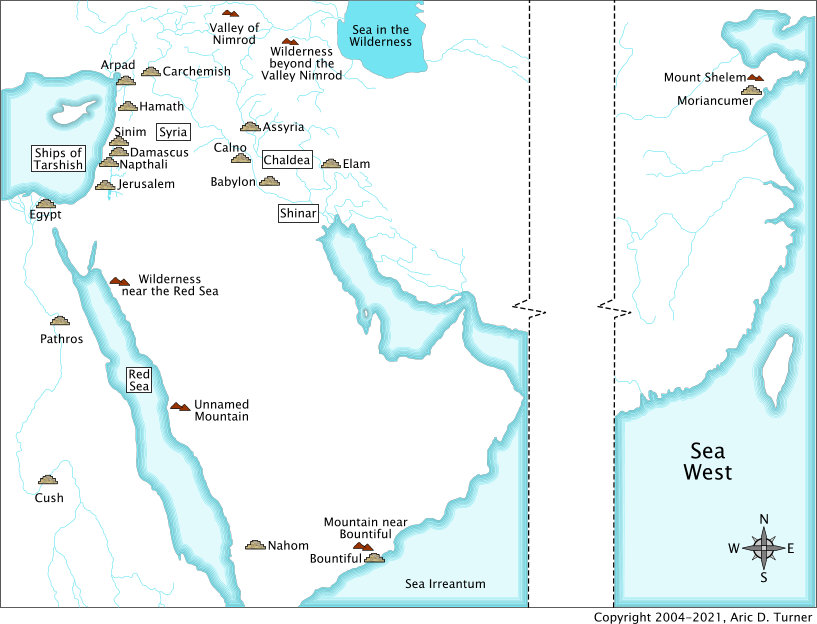The phrase 'islands of the sea' are used as a metaphor for the ends of the Earth. See the discussion about the sea north and sea south for more information about the isles of the sea meaning the ends of the earth [
click here].
Commentaries (
view it on a map)
II NEPHI 9:126 [21:11]: And it shall come to pass in that day, that the Lord shall set his hand again the second time to recover the remnant of his people, which shall be left from Assyria, and from Egypt, and from Pathros, and from Cush, and from Elam, and from Shinar, and from Hamath, and from the islands of the sea.
Commentary: This verse references the places of Assyria, Cush, Egypt, Elam, Hamath, the islands of the sea, Pathros, and Shinar. This verse also occurs in Isaiah 11:11. These are listed in the same verse so they join borders (or do not have any lands in between them). There is insufficient information in the Book of Mormon to locate these places. However, their locations are known. As listed, and in the 7th century BCE, they did share borders or did not have any lands in between them. The Assyrian Empire (captial city was Ninaveh) stretched to Egypt. The capital city was known as Zoan to the Hebrews or as Tannis by the Egyptians. Egypt covered the lower Nile. Pathros (capital city was Thebes) bordered Egypt and covered the middle Nile. Cush (capital city was Napata) bordered Pathros and covered the upper Nile. The area between Cush and Elam was the Arabian Peninsula and there was no organized ruler or empire claiming that area. Elam (captial city was Susa) bordered Shinar (captial city of Babylon). Hamath (captial city was Hamath) bordered Shinar. The phrase 'islands of the sea' indicates all other lands outside of these countries that surrounded Israel.
I NEPHI 12:65 [29:11]: For I command all men, both in the east, and in the west, and in the north, and in the south, and in the islands of the sea, that they shall write the words which I speak unto them:
Commentary: This verse references the place of the islands of the sea. This verse does not occur in the Bible. Since this verse uses a phrase for all four directions, 'all men, both in the east, and in the west, and in the north, and in the south,' this verse is a metaphor and not a specific location (see the
Sea North and Sea South in the Discoveries section). Since all four directions are included in addition to the phrase 'islands of the sea,' then this adds emphasis that this verse indicates everyone is included and leaves no one out.
Map




↑ Isles of the Sea
← Isles of the Sea
Isles of the Sea →
↓ Isles of the Sea








